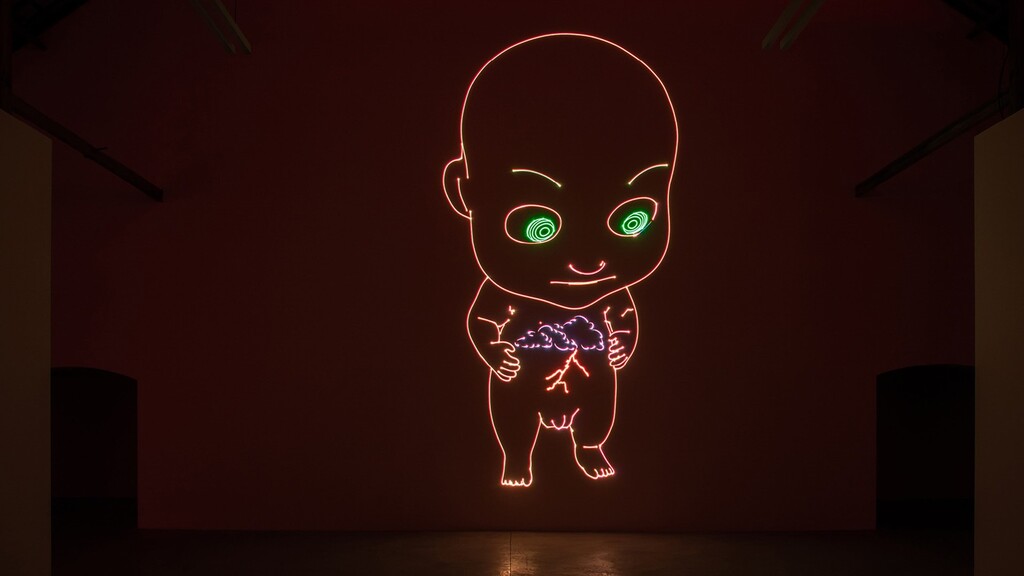
Art, community and political commitment – in this year’s Art & Activism programme of the Roskilde Festival, these elements meet in many ways. With a wide-ranging line-up of installations, performances, discussions and workshops, the programme highlights key social issues of our time. In recent years, art with an activist claim has taken an increasingly important role in the independent, non-profit Roskilde Festival, which takes place for the 53rd time this summer. In 2025, the focus will be on topics such as overconsumption, diversity, accessibility for minorities and the potential of celebratory culture as a form of protest. The Art & Activism program seamlessly follows the previous 185 artists from 45 countries – including international greats such as Charli XCX, Olivia Rodrigo, Stormzy, Nine Inch Nails, Tyla, Doechii, Arca and FKA twigs.
Our goal was to curate a program that confronts festival guests in different ways with the pressing issues of our time – emotionally, critically, entertainingly. We present international and Danish artists who use different formats to invite people to think and participate, explains Signe Brink Wehl, Director of Art at the Roskilde Festival.
A monumental work of art on the festival site
A new visual highlight awaits visitors on the hillside of the festival camp: The Long Way Around – a gigantic ramp in the form of a spiral installation created by the British artist Jesse Darling. It gives people in wheelchairs access to the hilltop and at the same time invites everyone to choose a slow, conscious way up. The walk-in sculpture is expected to last for five years.
Art for a world that does not include everyone
Other works of art and events focus on the strengths that arise when you assert yourself in a world that is not designed equally for everyone. A central example of this is the installation our voises carry futur dreams, in which Danish artist Julie Nymann addresses life with dyslexia. Her work is complemented by the sound installation Advantages of Being Dyslexic, which also makes the perception and potentials beyond conventional norms experienceable. The queer collective Eau de Cologne from Georgia is also critical of social exclusions. Her Talk When Rave Becomes Political is about life as an LGBTQ+ person in an increasingly authoritarian environment. With their energetic live performance, they simultaneously bring the political power of parties to the stage.
50 tons of clothing and a “textile zombie”
The artwork Return to Sender by the Kenyan collective The Nest Collective consists of 50 tons of secondhand clothing – a dramatic picture of the mountains of waste created by global overconsumption in low-income countries. In a similar direction is the performance Dead White Man by British artist Jeremy Hutchinson, who roams the grounds as a “textile zombie” – clothed in discarded clothes, a memorial to our throwaway society.
Performative formats in focus on the platform stage
On the platform, the stage for experimental art forms, the focus is on performance art. We are currently experiencing an exciting development: artists are increasingly working hybridly and merging dance, music, theatre and visual arts. The platform is designed precisely for these experiments and enables an intensive experience in direct exchange with the audience, says Signe Brink Wehl. This year’s highlights include the celebrated Turkish artist Göksu Kunak with her powerful performance Hungry 2.0. Between video art, pole dance and bodybuilding, she unfolds an impressive play with body, identity and transformation. Also included: the dance performance WIRED by choreographer Marie Kaae, monumental laser projections by British artist Matt Copson, the circus show MANIFEST, drag karaoke – and much more.
